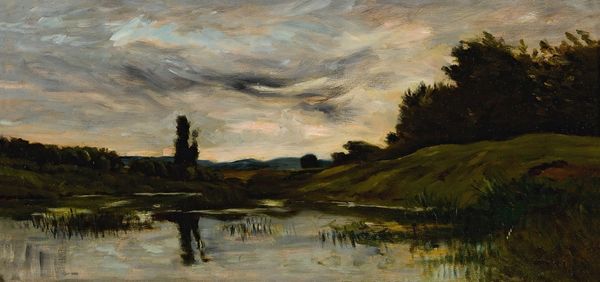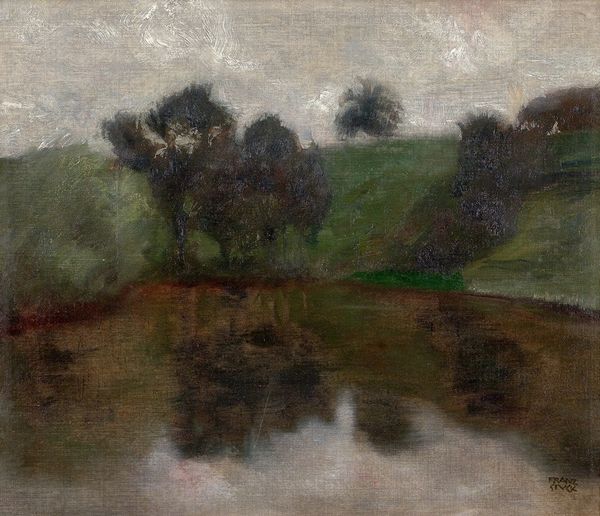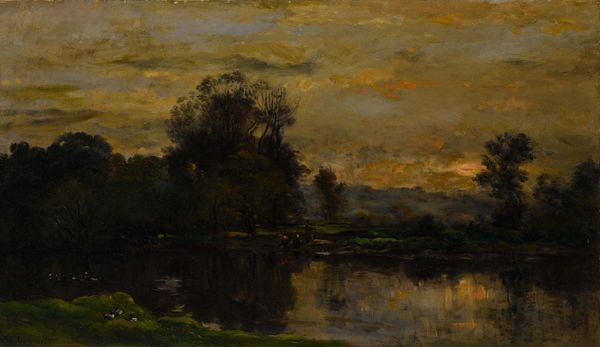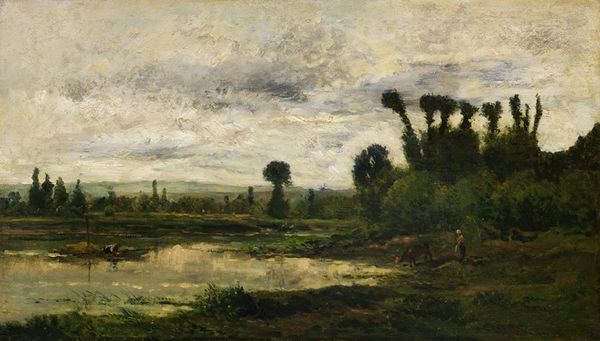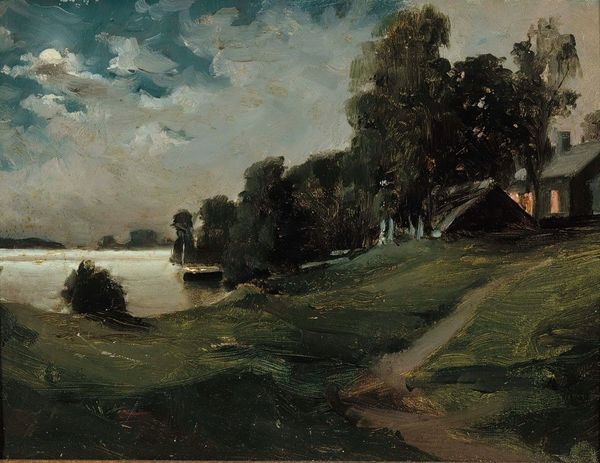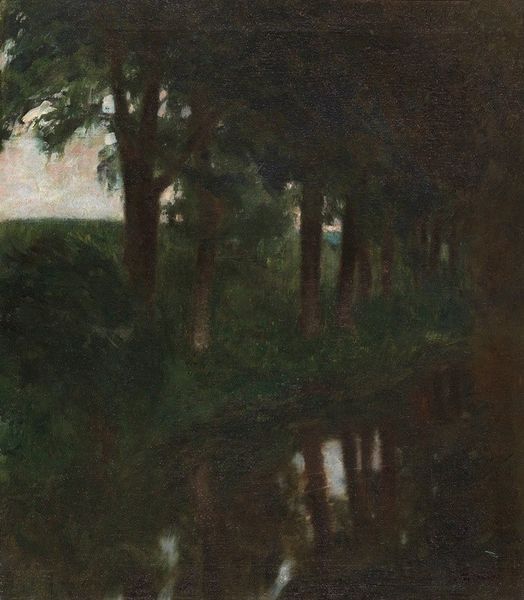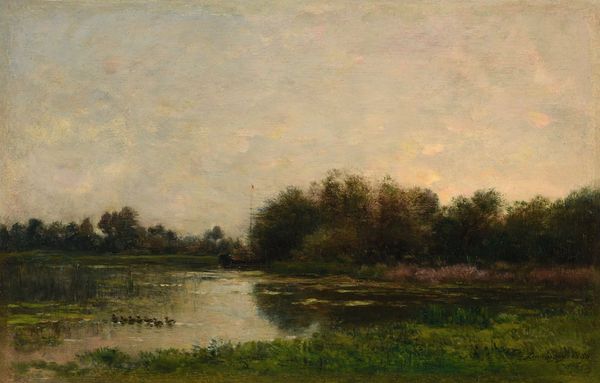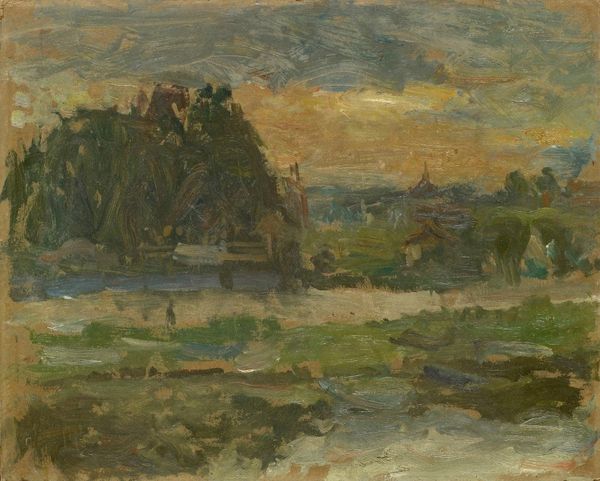
Copyright: Public Domain: Artvee
Curator: Welcome. Before us hangs "Bord De Rivière", or "Riverbank," crafted in 1875 by Charles-François Daubigny. Daubigny, deeply involved in the Barbizon school, employed oil paints en plein air to capture this scene. What's your immediate impression? Editor: An interesting, brooding tranquility. It feels very...settled. The subdued palette, almost monochromatic, creates this sense of serene, somewhat melancholic stability. I'm immediately drawn to the light reflected on the water – almost a shimmering path leading...where, exactly? Curator: It's interesting that you see it as tranquil. Daubigny was at the forefront of plein air painting, a practice deeply tied to industrial and chemical advancements. New pigments, mass-produced materials...the ease of taking these materials directly to the riverbank transformed art making itself. Were materials widely accessible at that time? Editor: And how did these novel techniques or material transformations influence symbolic representation of traditional concepts or events? How can the symbol’s meaning be affected? It reflects something essential about our relationship with nature itself, a visual echo of something primordial. The river’s edge always holds a potent psychological draw, the border between known and unknown, life and what lies beyond. Curator: Absolutely. The social and economic context of landscape painting can't be divorced from the work itself, of course, impacting art that time. Now we need to study the composition and analyze all its sides to fully catch its symbolic richness. The rapid changes in artistic production also had material consequences. But that impasto hints at a very tangible reality of artistic production that has since vanished to some degree. The painting evokes the experience of standing directly there, capturing a fleeting moment. How has it been transmitted or transformed? Editor: I agree; that feeling of a specific moment captured is definitely present. And, viewed iconographically, a seemingly simple image gains layers of significance. Curator: It’s all tied in: The material, the making, and, finally, its place in cultural memory. It gives this work a unique power. Editor: A truly evocative work; it is like entering into a dream-space shaped by nature.
Comments
No comments
Be the first to comment and join the conversation on the ultimate creative platform.



